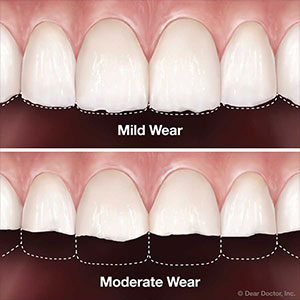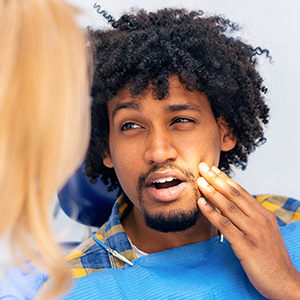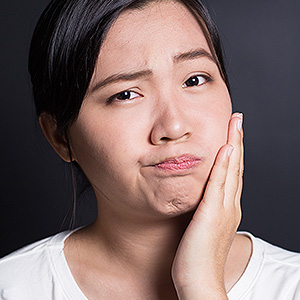Unlike our primitive ancestors, our teeth have it relatively easy. Human diets today are much more refined than their counterparts from thousands of years ago. Ancient teeth recovered from those bygone eras bear that out, showing much more wear on average than modern teeth.
Even so, our modern teeth still wear as we age—sometimes at an accelerated rate. But while you can’t eliminate wearing entirely, you can take steps to minimize it and preserve your teeth in your later years. Here are 3 things you can do to slow your teeth’s wearing process.
Prevent dental disease. Healthy teeth endure quite well even while being subjected to daily biting forces produced when we eat. But teeth weakened by tooth decay are more susceptible to wear. To avoid this, you should practice daily brushing and flossing to remove disease-causing dental plaque. And see your dentist at least twice a year for more thorough dental cleanings and checkups.
Straighten your bite. A poor bite, where the top and bottom teeth don’t fit together properly, isn’t just an appearance problem—it could also cause accelerated tooth wear. Having your bite orthodontically corrected not only gives you a new smile, it can also reduce abnormal biting forces that are contributing to wear. And don’t let age stop you: except in cases of bone deterioration or other severe dental problems, older adults whose gums are healthy can undergo orthodontics and achieve healthy results.
Seek help for bruxism. The term bruxism refers to any involuntary habit of grinding teeth, which can produce abnormally high biting forces. Over time this can increase tooth wear or weaken teeth to the point of fracture or other severe damage. While bruxism is uncommon in adults, it’s still a habit that needs to be addressed if it occurs. The usual culprit is high stress, which can be better managed through therapy or biofeedback. Your dentist can also fashion you a custom guard to wear that will prevent upper and lower teeth from wearing against each other.
If you would like more information on minimizing teeth wear, please contact us or schedule an appointment for a consultation. You can also learn more about this topic by reading the Dear Doctor magazine article “How and Why Teeth Wear.”




